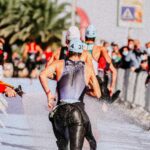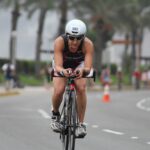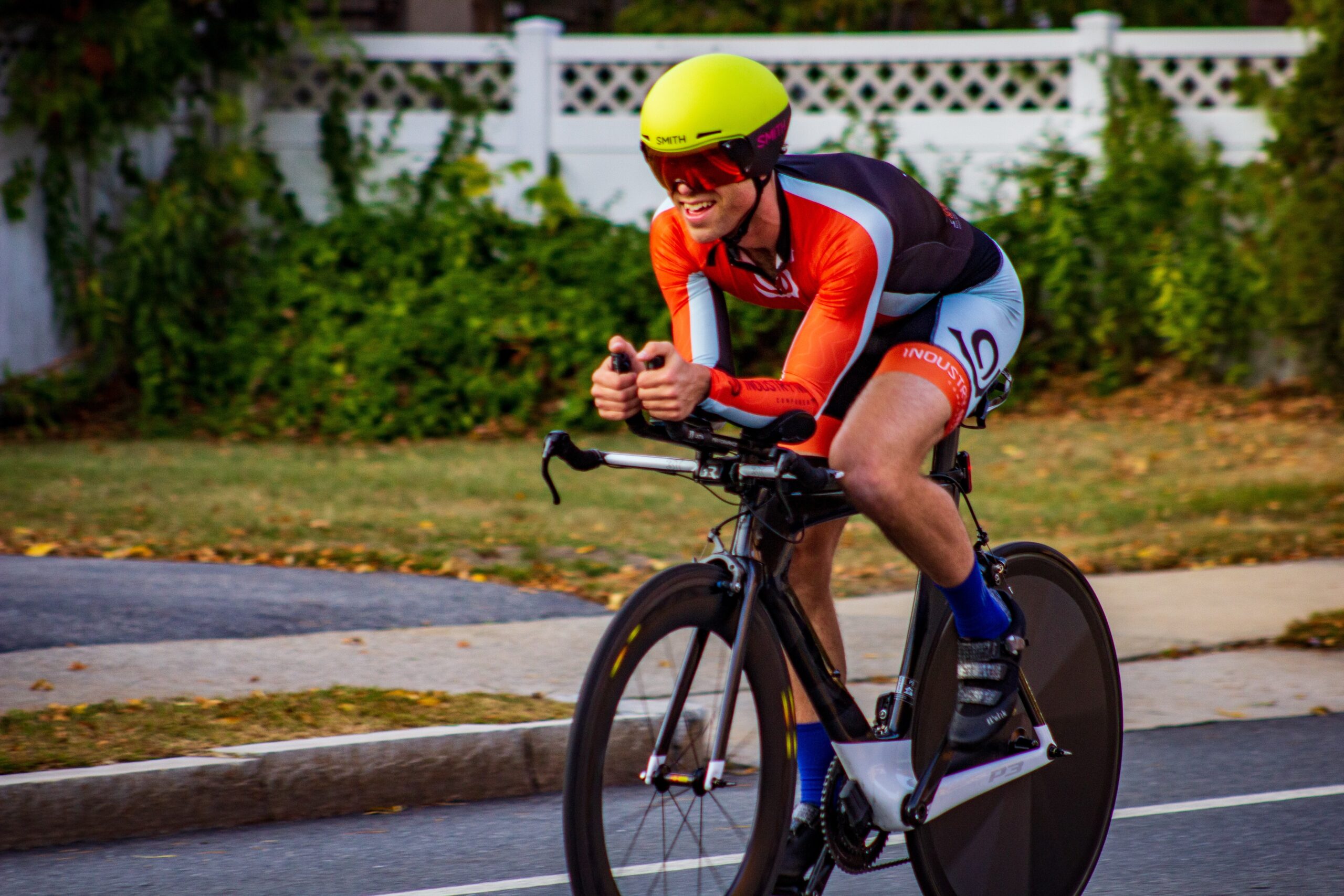“Mindset” is an essential and little addressed contributor to triathlon success and a mental area that has only come to light in my work with triathletes during the past few years. Let me preface this discussion by clarifying that my use of the word mindset is different from the use of mindset popularized by the Stanford University researcher Carol Dweck (a perspective, BTW, that can also help triathletes achieve their competitive goals). When I talk about mindset, I mean what is going on in your mind leading up to the start of a race. What happens in your mind during that oh-so-important period sets the stage for whether you perform to the best of your ability.
Bad Mindsets
Before I discuss the mindsets that I have seen as most common among the triathletes I have worked with, I would like to describe four mindsets that most interfere with triathletes’ ability to perform their best. First, a doubtful mindset involves one grounded in a lack of confidence. As you’re setting up your transition, getting warmed up, or doing your final preparations before the swim, you are questioning yourself (e.g., “I don’t think I can hold my planned pace.”) and negative (e.g., “I don’t have a chance.”).
Second, a worrying mindset means being preoccupied with “what ifs”, that is, concern for all of the bad things that could happen in a race (e.g., “What if I don’t play well” or “What if I get crushed”). This mindset is particularly common in long-distance races because there are many more opportunities for bad things to happen (e.g., flat tire, inadequate fueling, headwind).

Third, a tentative mindset occurs when you are feeling uncertain and not fully committed as you approach the race. If you have a tentative mindset,
Finally, a fearful mindset is one in which you are actually afraid of performing, leading to a tense and cautious effort in race. All of these mindsets pretty much guaranteed poor performance and failure to achieve your goals.
Good Mindsets
In contrast, I have found three mindsets that the best triathletes appear to use most often before a race.
Aggressive. When I talk about an aggressive mindset, I don’t mean that triathletes should try to hurt their opponents. Rather, I think of aggressiveness as a mindset in which triathletes are proactive, assertive, and forceful, for example, having a fast start of the swim or finishing the run strong.
This aggressive mindset is often needed for triathletes to shift from solid performance to exceptional performance because it allows them to take their performances to the next level, particularly for those who aren’t naturally aggressive in how they perform. For example, I worked with a talented age-grouper who was such a gentle person that he wasn’t able to naturally “take it to” the course in triathlons. For him to race as fast as he was capable, he needed to adopt an aggressive mindset.

An aggressive mindset can be so valuable because triathlon is, in some ways, a “combat sport,” meaning that the competitive conditions (e.g., weather, terrain, wind) are trying to literally or figuratively beat you. By assuming an aggressive mindset can you have a chance to vanquish those enemies.
An aggressive mindset can be developed in several ways. First, you’re more likely to perform aggressively if your body is amped up a bit more than usual. You can raise your physical intensity with more movement during training, in your competitive routines, and just before you begin to compete. Simply moving more and being more dynamic in your movements will help you shift to a more aggressive mindset.
Second, you can use high-energy self-talk to instill that aggressive mindset. Examples include: “Let’s go! Attack! Charge! Bring it!” What you notice is not only what you say, but how you say it. So, your aggressive self-talk should sound, well, aggressive. No pussy cats here; only tigers, lions, and panthers allowed.
Third, you can incorporate an aggressive mindset into mental imagery in which you see and feel yourself performing aggressively which, in turn, helps create more attacking thinking, focus, and feeling.
Calm. A calm mindset is typically best for triathletes who get nervous before they race. Throughout your pre-race preparations and when about to begin a race, your primary goal is to settle down and relax, thus allowing your mind to let go of doubt and worry and your body to be free of nerves and tension.
A calm mindset can be created in several ways. First, it’s difficult to have a calm mind if your body is anxious, so focusing on relaxing your body is a good start. Deep breathing and muscle relaxation are two good tools you can use to calm your body which will, in turn, calm your mind

Second, calming and reassuring self-talk can ease your tension, for example, “Easy does it.”, “Cool, calm, and collected”, and “Chillin’ before I’m thrillin’.” Calming self-talk can shift your doubtful, worrying, or fearful mindset, giving you the confidence and comfort to swim, bike, and run your best.
Third, you can use mental imagery in which you see and feel yourself being calm before a race. This imagery has a direct physiologically relaxing effect on both your body and mind. Plus, seeing yourself performing well in your imagery has the related positive effect of increasing your confidence and narrowing your focus on good performance.
Clear. A clear mindset involves having basically nothing related to racing going on in your mind before a race. The triathletes who use a clear mindset are those you see before a race talking to coaches or competitors. They are often smiling, dancing around, chatting it up, or singing to themselves. They’re looking all around and seem completely unfazed by the fact that they are about compete.
I have found that a clear mindset is the least common mindset among triathletes and most often found in a certain group of elite triathletes. These triathletes can use a clear mindset because they are incredibly talented natural triathletes and have years of experience that allow them to trust their bodies completely to perform their best without any interference from their minds.
A clear mind is most suited for triathletes who are intuitive (meaning they don’t have to think about their triathlon very much to perform their best), free spirited (meaning they go with the flow rather than being really structured in their approach to their triathlon), and experienced (meaning they have a lot of confidence and trust in their capabilities from many years and successes).
You create a clear mindset by thinking about anything except your triathlon. Talking to others around you, thinking about someone or something that makes you feel good, and listening to music are several ways you can keep your mind clear, thus preventing it from getting in the way of your body performing its best.
Identify Your Ideal Mindset
Identifying your ideal mindset is so important because if you don’t know what your best mindset is, you’ll have no chance of achieving it and, as a result, little chance of performing your best. The challenge is that you may think you know what your ideal mindset is because it is the one you’ve always used, you are comfortable with it, and it seems to work for you. However, I have found with some frequency that the mindset that triathletes say works best for them is often not actually the case.
There are two ways you can identify your ideal mindset. First, think back to several past races in which you performed really well. Now, recall what went on in your mind before the race. Then, think back to several other past races where you didn’t perform up to what you had hoped and remember your mindset in those races. If you are like most triathletes, you will see a pattern in which you had one mindset when you succeeded and another mindset when you didn’t.

But you shouldn’t use past experience as the only judge of your ideal mindset because what worked in the past may not work now or in the future. As you mature as an triathlete, you change physically and mentally, and so your mindset may evolve as well.
The second way you can determine your ideal mindset, and to either confirm or disprove your past experiences with your mindset, is to experiment with different mindsets in training. Here’s how to experiment with your mindset. Divide a training session into three sections and try out a different mindset (i.e., aggressive, calm, or clear) in each segment. If there is another mindset that I haven’t mentioned and that you think might be worth trying, be sure to include that mindset in your experimentation.
As you experiment with each mindset, see how you feel and how you perform in each segment. If you are like most triathletes, two things may happen. First, you will see a pattern emerge in which you perform better using one mindset over the others. If no clear winner materializes from your experimentation, you will want to continue to test out the different mindsets in ensuing days of training. If you will be competing in relatively less important races, you can also extend your experimentation to these as they will provide a more accurate gauge of your ideal mindset under actual competitive conditions.
If you have big races coming up, it’s never a good idea to try anything new. Rather, stick with the mindset you are comfortable with and continue to explore your ideal mindset in training and lower-level races. In any case, even when you identify the mindset that you believe most effective, you will still want to continue to test and fine tune it in increasingly more competitive and demanding events.
Do you want to take the next step in training your mind to perform your best in training and on race day? Here are four options for you:
- Read my Inside the Tri-Mind blog.
- Listen to my Train Your Mind for Athletic Success podcast.
- Read my latest mental training book: Train Your Mind for Athletic Success: Mental Preparation to Achieve Your Sports Goals.
- Take a look at my online mental training courses.
- Schedule a 1:1 session with me.






